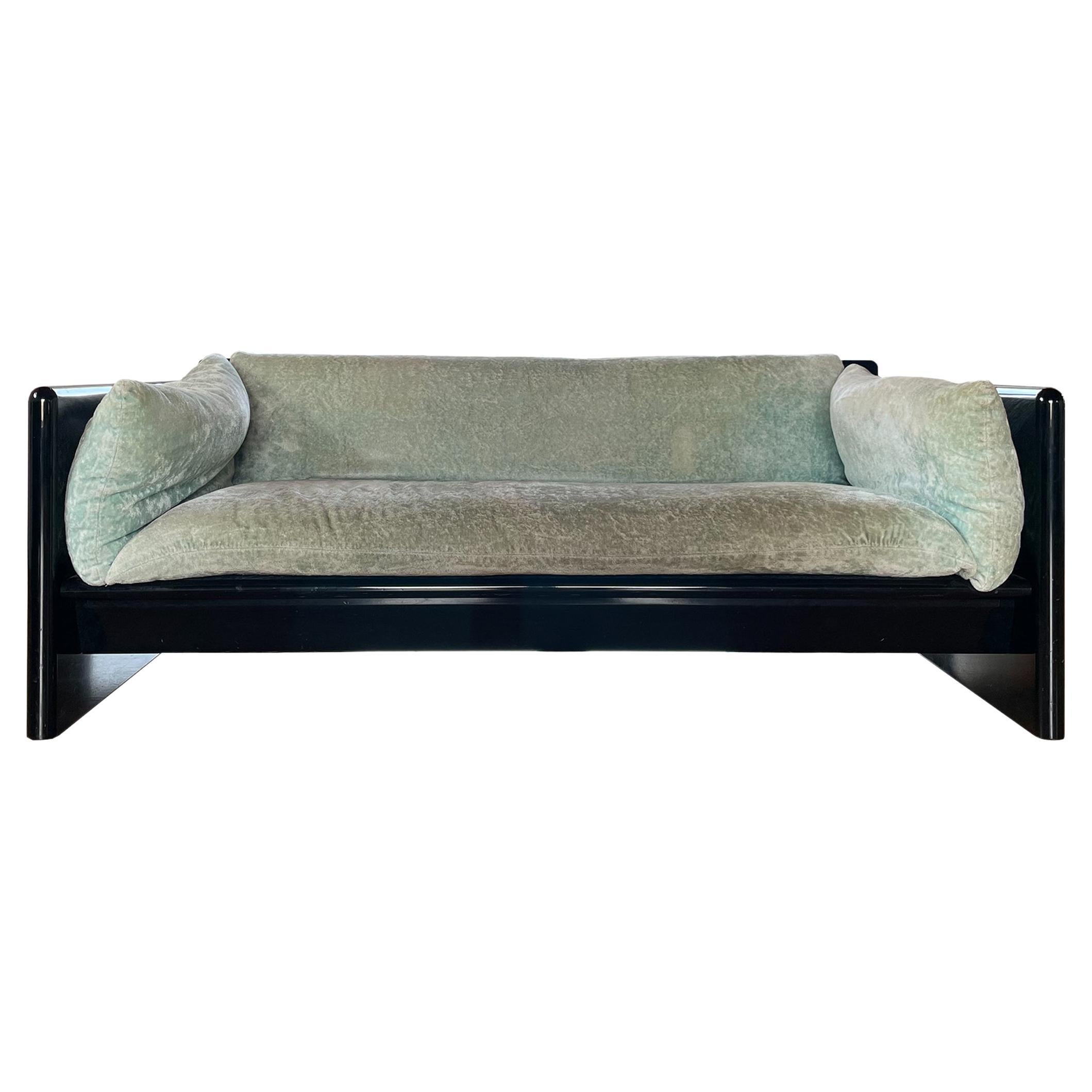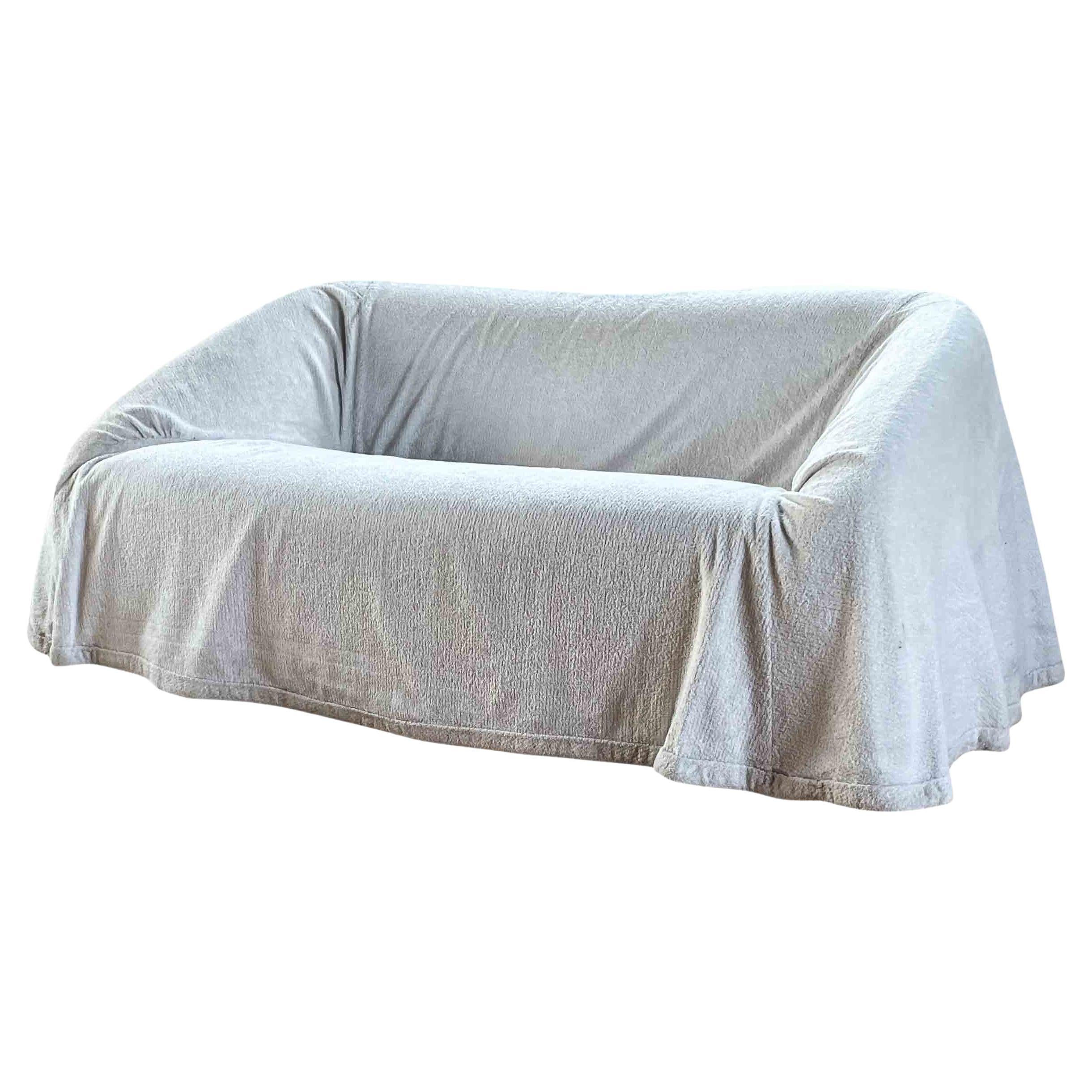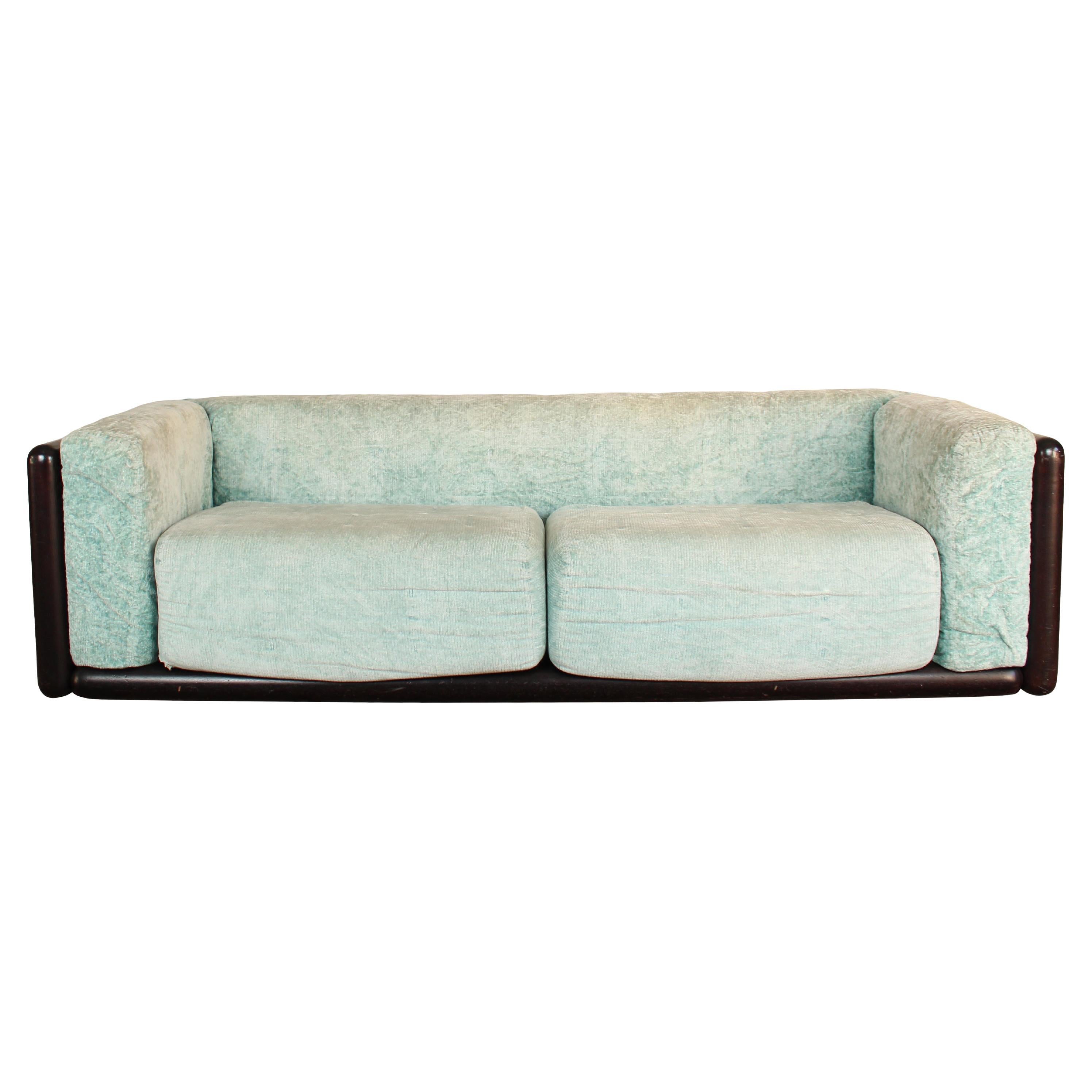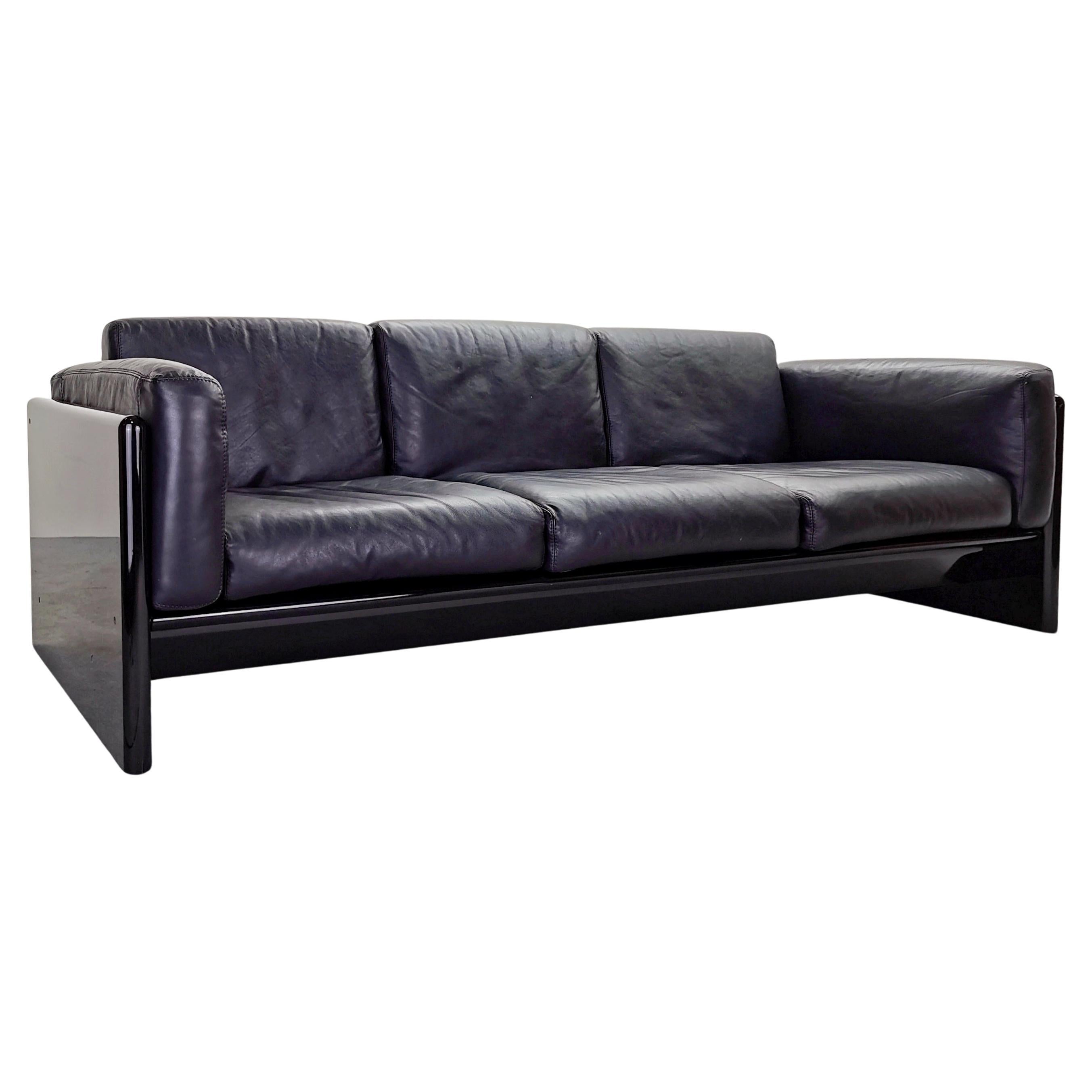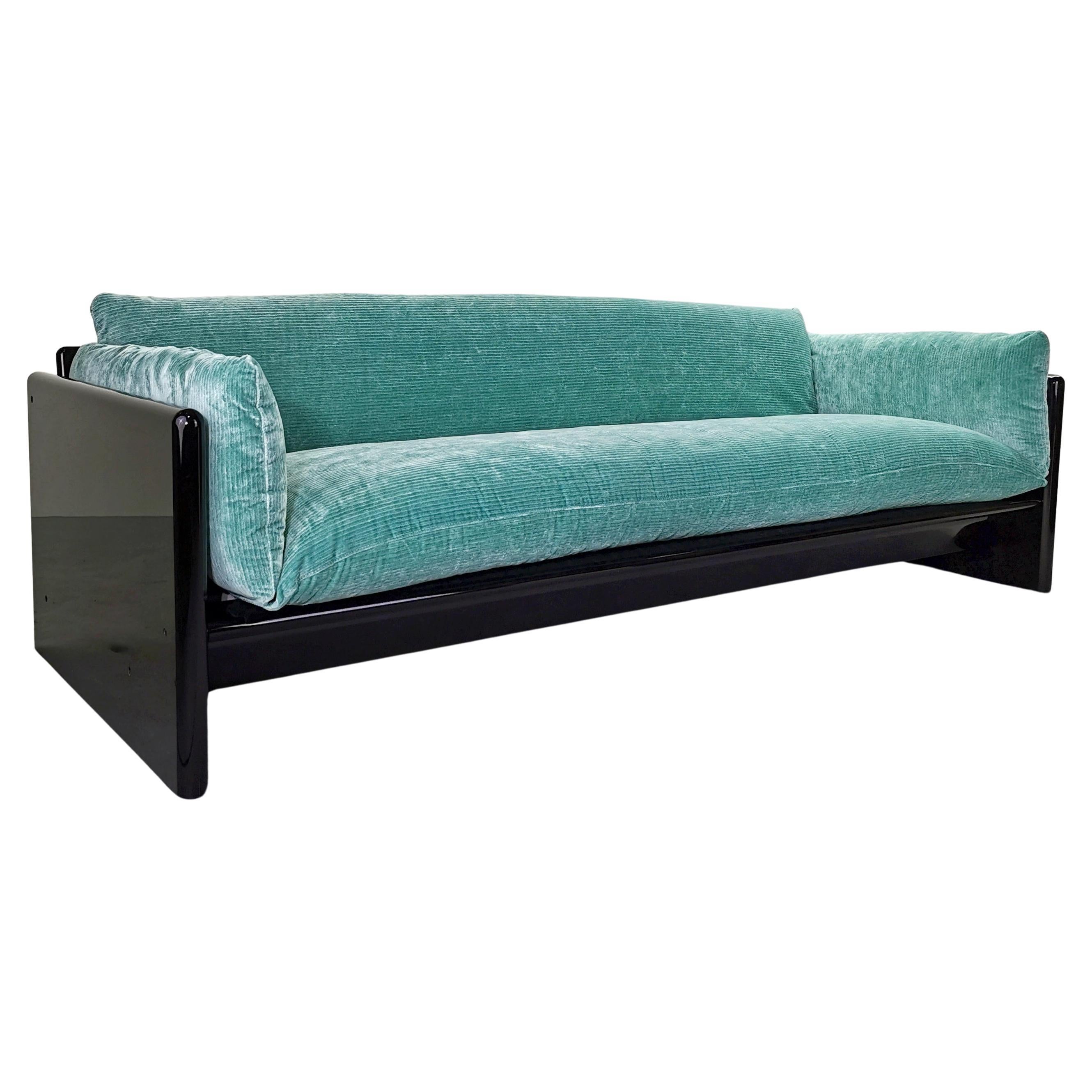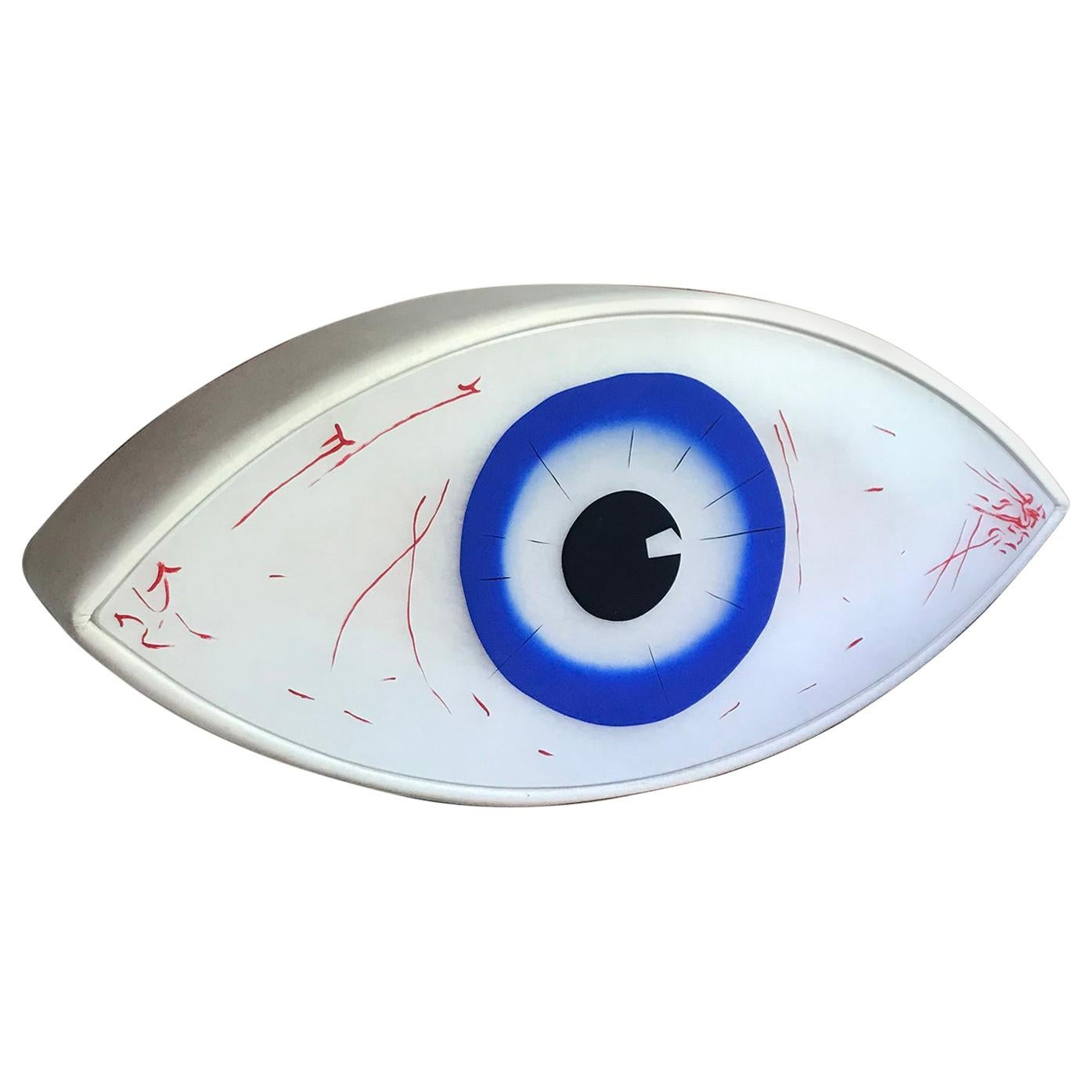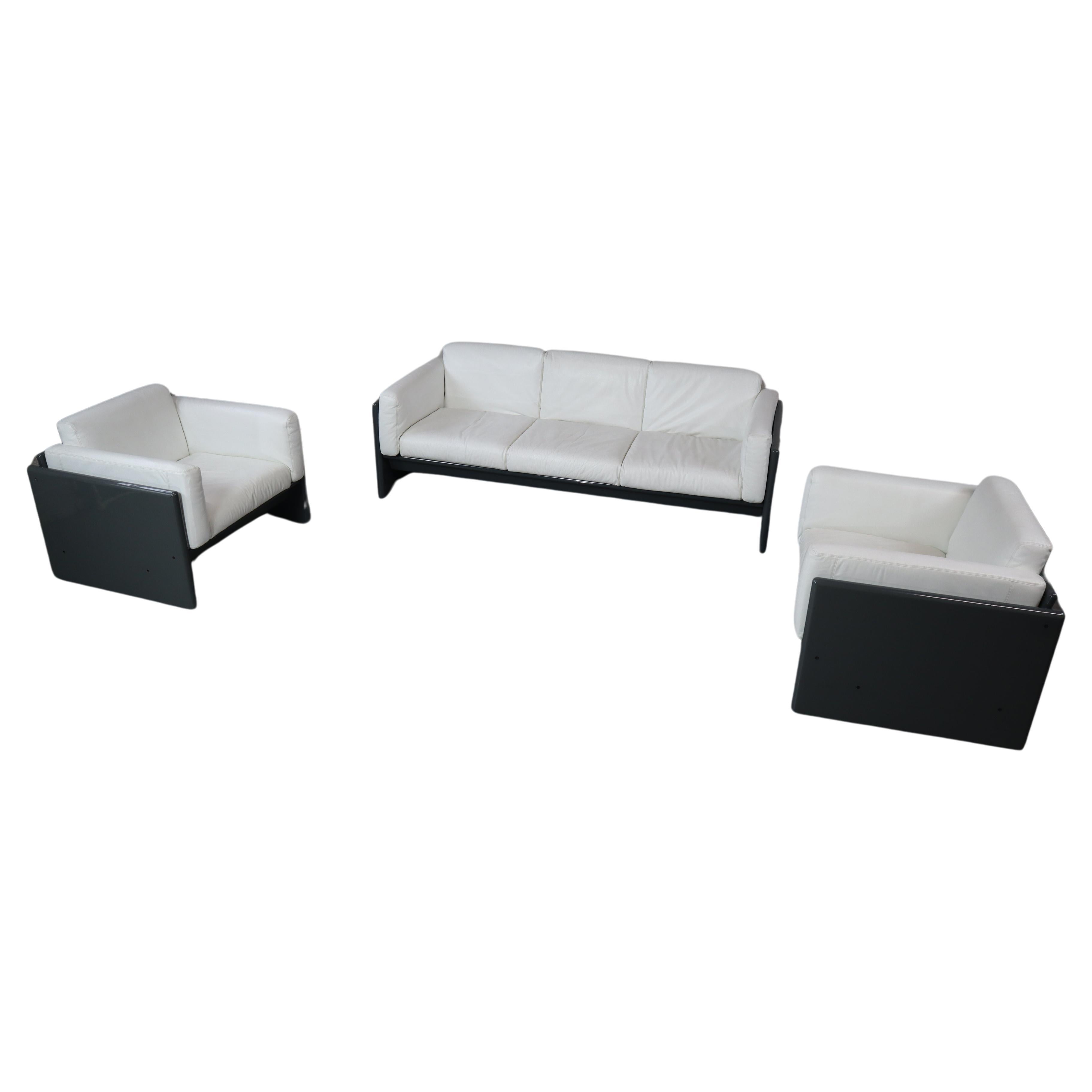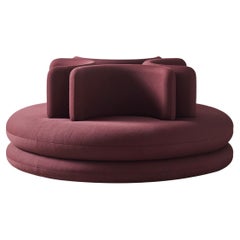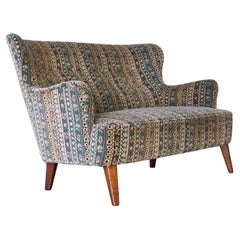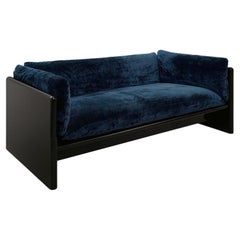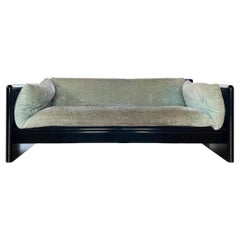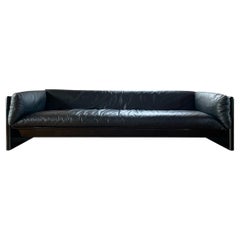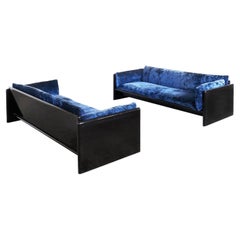
Dino Gavina Pair of Blue Velvet 'Simone' Sofas for Studio Simon, 1971
View Similar Items
Want more images or videos?
Request additional images or videos from the seller
1 of 13
Dino Gavina Pair of Blue Velvet 'Simone' Sofas for Studio Simon, 1971
About the Item
- Creator:Dino Gavina (Designer),Studio Simon (Manufacturer)
- Dimensions:Height: 22.45 in (57 cm)Width: 84.26 in (214 cm)Depth: 31.5 in (80 cm)Seat Height: 15.75 in (40 cm)
- Sold As:Set of 2
- Style:Post-Modern (In the Style Of)
- Materials and Techniques:
- Place of Origin:
- Period:
- Date of Manufacture:1971
- Condition:Wear consistent with age and use. These sofas are in a good vintage condition with some minor marks on the lacquered shells - which is normal for a 50 year old lacquered surface. If you like to get these shells restored we can arrange that for you. Please let us know.
- Seller Location:Tilburg, NL
- Reference Number:1stDibs: LU5892225931102
About the Seller
5.0
Platinum Seller
These expertly vetted sellers are 1stDibs' most experienced sellers and are rated highest by our customers.
Established in 2020
1stDibs seller since 2021
121 sales on 1stDibs
Typical response time: 1 hour
More From This SellerView All
- Verner Panton Cloverleaf Sofa 5 Sections for VerpanLocated in Tilburg, NLVerner Panton cloverleaf sectional sofa. Current production. This listing shows a 5-piece Cloverleaf Sofa. Seats at least 9 people in a very interestin...Category
21st Century and Contemporary Sofas
MaterialsFabric
- Verner Panton 'Easy' Sofa 1963 for VerpanBy Verner PantonLocated in Tilburg, NLVerner Panton 'Easy' sofa for Verpan. Designed in 1963. New, current production. With its round shapes and layered design, the Easy collection stands out as one of the most visual...Category
21st Century and Contemporary Danish Scandinavian Modern Sofas
MaterialsFabric
$8,881 / item - Theo Ruth Mid Century Sofa for Artifort 1956By Artifort, Theo RuthLocated in Tilburg, NLThis is a wonderful sofa designed by Theo Ruth for Wagemans & van Tuinen / Artifort, made in 1956. The design of this sofa is classic mid-century and Scandinavian in style, but really comes to life due to the fantastic colorful upholstery. This vertically striped fabric shows many geometrical shapes, variations and colors and is quintessentially mid-century in appearance. At the same time, it is also very modern and this sofa will be a stunning addition in every interior. The design of this Theo Ruth sofa...Category
Mid-20th Century Dutch Mid-Century Modern Sofas
MaterialsFabric, Wood
- Garcìa Cumini 'Fold' Sectional Sofa for Verzelloni ItalyBy Verzelloni, García CuminiLocated in Tilburg, NLGarcìa Cumini 'Fold' sectional sofa for Verzelloni Italy. New, current production. From the 'Fold' seating series. More specific: a combination of a chaise longue and an end-piec...Category
21st Century and Contemporary Italian Modern Sofas
MaterialsMetal
- Jan Armgardt 'Volare' Two Seater Sofa for Leolux 1990sBy Jan ArmgardtLocated in Tilburg, NLJan Armgardt 'Volare' Two Seater Sofa for Leolux, The Netherlands, 1990s. This wire frame sofa is one of the most interesting Leolux pieces, designed ...Category
Late 20th Century Dutch Mid-Century Modern Sofas
MaterialsMetal
- Verner Panton 'Welle' 3 Piece Landscape 1969 for VerpanBy Verner PantonLocated in Tilburg, NLVerner Panton 'Welle' Three Piece Landscape for Verpan. Designed in 1969. New, current production. To call Verner Panton’s Welle series “lounge furniture” is almost an understatement. Like so much else of Panton’s extensive oeuvre, these wildly imaginative organic forms land like a colourful bomb in the sleepy world of traditional furniture – and leave us anything but indifferent. With the 'Welle' pieces you can create a large seating or lounging landscape. For this listing we combined the 'Welle' 1, 3 and 4. - Welle 3...Category
21st Century and Contemporary Danish Scandinavian Modern Living Room Sets
MaterialsFabric
You May Also Like
- Simone Sofa by Dino Gavina for Studio SimonBy Simon Gavina EditionsLocated in San Pietro di Morubio, VeronaDino Gavina "Simone" sofa for Studio Simon, Italian production of the 1970s.Category
Vintage 1970s Italian Mid-Century Modern Sofas
MaterialsFabric, Plywood
- Studio Simon Black Wood and Azure Velvet Two-Seater “Simone” Sofa, Italy, 1975By Studio SimonLocated in Vicenza, ITTwo-seater “Simone” sofa, designed and manufactured by Studio Simon in 1975. The structure is made of black lacquered wood. An azure velvet big seat completes the sofa. The min...Category
Vintage 1970s Italian Mid-Century Modern Sofas
MaterialsCotton, Velvet, Foam
- Studio Simon Minimalist Black Leather Three-Seater “Simone” Sofa, Italy, 1975By Studio SimonLocated in Vicenza, ITThree-seater “Simone” sofa, designed and manufactured by Studio Simon in 1975. The structure is made of black lacquered wood. A black leather big seat completes the sofa. The m...Category
Vintage 1970s Italian Mid-Century Modern Sofas
MaterialsLeather, Beech, Foam
- Carlo Scarpa Iroko and Velvet Cornaro Sofa for Studio Simon, 1974, Set of 2By Carlo Scarpa, Studio SimonLocated in Vicenza, ITSet of 2 Cornaro two-seater sofas, designed by Carlo Scarpa and manufactured by Studio Simon in 1974. Made of Iroko wood, foam, and azure chenille velvet. Excellent vintage conditi...Category
Vintage 1970s Italian Mid-Century Modern Living Room Sets
MaterialsChenille, Velvet, Foam, Wood
- Kazuhide Takahama White Velvet “Mantilla” Two-Seater Sofa for Studio Simon, 1973By Kazuhide Takahama, Studio SimonLocated in Vicenza, ITTwo-seater “Mantilla” sofa, designed by Kazuhide Takahama for Studio Simon in 1973. It is made of wood and polyurethane foam structure, with white velvet upholstery. Kazuhide T...Category
Vintage 1970s Italian Mid-Century Modern Sofas
MaterialsCotton, Velvet, Foam
- Carlo Scarpa Iroko Wood and Green Velvet Cornaro Sofa for Studio Simon, 1974By Carlo Scarpa, Studio SimonLocated in Vicenza, ITCornaro two-seater sofa, designed by Carlo Scarpa and manufactured by Studio Simon in 1974. Made of Iroko wood, foam, and azure chenille velvet. Excellent vintage condition. Born in Venice on June 2nd, 1906, Carlo Scarpa began working very early. Only a year after he had first qualified as an architect in 1926, he began working for the Murano glassmakers Cappellin & Co. in a consultative capacity; from 1927, he began to experiment with the Murano glass, and this research not only gave him excellent results here but would also inform his progress for many years to come. Between 1935 and 1937, as he entered his thirties, Carlo Scarpa accepted his first important commission, the renovation of Venice’s Cà Foscari. He adapted the spaces of this stately University building which stands on the banks of the Grand Canal, creating rooms for the Dean’s offices and a new hall for academic ceremonies; Mario Sironi and Mario De Luigi were charged with doing the restoration work on the frescos. After 1945, Carlo Scarpa was constantly busy with new commissions, including various furnishings and designs for the renovation of Venice’s Hotel Bauer and designing a tall building in Padua and a residential area in Feltre, all worth mentioning. One of his key works, despite its relatively modest diminished proportions, was the first of many works which were to follow in the nineteen fifties: the [bookshop known as the] Padiglione del Libro, which stands in Venice’s Giardini di Castello and shows clearly Scarpa’s passion for the works of Frank Lloyd Wright. In the years which were to follow, after he had met the American architect, Scarpa repeated similar experiments on other occasions, as can be seen, in particular, in the sketches he drew up in 1953 for villa Zoppas in Conegliano, which show some of his most promising work. However, this work unfortunately never came to fruition. Carlo Scarpa later created three museum layouts to prove pivotal in how twentieth-century museums were set up from then on. Between 1955 and 1957, he completed extension work on Treviso’s Gipsoteca Canoviana [the museum that houses Canova’s sculptures] in Possagno, taking a similar experimental approach to the one he used for the Venezuelan Pavilion at [Venice’s] Giardini di Castello which he was building at the same time (1954-56). In Possagno Carlo Scarpa was to create one of his most incredible ever works, which inevitably bears comparison with two other museum layouts that he was working on over the same period, those of the Galleria Nazionale di Sicilia, housed in the Palazzo Abatellis in Palermo (1953-55) and at the Castelvecchio in Verona (1957- 1974), all of which were highly acclaimed, adding to his growing fame. Two other buildings, which are beautifully arranged in spatial terms, can be added to this long list of key works that were started and, in some cases, even completed during the nineteen fifties. After winning the Olivetti Award for architecture in 1956, Scarpa began work in Venice’s Piazza San Marco on an area destined to house products made by the Industrial manufacturers Ivrea. Over the same period (1959-1963), he also worked on renovating and restoring the gardens and ground floor of the Fondazione Querini Stampalia in Venice, which many consider one of his greatest works. While he worked on-site at the Fondazione Querini Stampalia, Carlo Scarpa also began building a villa in Udine for the Veritti family. To shed some light on how much his work evolved over the years, it may be useful to compare this work with that of his very last building, villa Ottolenghi Bardolino, which was near completion at the time of his sudden death in 1978. Upon completion of villa Veritti over the next ten years, without ever letting up on his work on renovation and layouts, Scarpa accepted some highly challenging commissions which were to make the most of his formal skills, working on the Carlo Felice Theatre in Genoa as well as another theatre in Vicenza. Towards the end of this decade, in 1969, Rina Brion commissioned Carlo Scarpa to build the Brion Mausoleum in San Vito d’Altivole (Treviso), a piece he continued to work on right up until the moment of his death. Nevertheless, even though he was totally absorbed by work on this mausoleum, plenty of other episodes can offer some insight into the final years of his career. As work on the San Vito d’Altivole Mausoleum began to lessen in 1973, Carlo Scarpa started building the new headquarters for the Banca Popolare di Verona. He drew up plans that were surprisingly different from the work he carried out simultaneously on the villa Ottolenghi. However, the plans Carlo Scarpa drew up, at different times, for a monument in Brescia’s Piazza della Loggia commemorating victims of the terrorist attack on May 28th, 1974, make a sharp contrast to the work he carried out in Verona, almost as if there is a certain hesitation after so many mannered excesses. The same Pietas that informs his designs for the Piazza Della Loggia can also be seen in the presence of the water that flows through the Brion Mausoleum, almost as if to give a concrete manifestation of pity in this twentieth-century work of art. Carlo Scarpa has put together a highly sophisticated collection of structures occupying the mausoleum’s L-shaped space stretching across both sides of the old San Vito d’Altivole cemetery. A myriad of different forms and an equally large number of different pieces, all of which are separate and yet inextricably linked to form a chain that seems to offer no promise of continuity, arising out of these are those whose only justification for being there is to bear the warning “si vis vitam, para mortem,” [if you wish to experience life prepare for death] as if to tell a tale that suggests the circle of time, joining together the commemoration of the dead with a celebration of life. At the entrance of the Brion Mausoleum stand the “propylaea,” followed by a cloister that ends by a small chapel, with an arcosolium bearing the family sarcophagi, the central pavilion, held in place on broken cast iron supports, stands over a mirror-shaped stretch of water and occupies one end of the family’s burial space. The musical sound of the walkways, teamed with the luminosity of these harmoniously blended spaces, shows how, in keeping with his strong sense of vision, Carlo Scarpa could make the most of all his many skills to come up with this truly magnificent space. As well as an outstanding commitment to architectural work, with the many projects we have already seen punctuating his career, Carlo Scarpa also made many equally important forays into the world of applied arts. Between 1926 and 1931, he worked for the Murano glassmakers Cappellin, later taking what he had learned with him when he went to work for the glassmakers Venini from 1933 until the 1950s. The story of how he came to work on furniture design is different, however, and began with the furniture he designed to replace lost furnishings during his renovation of Cà Foscari. The later mass-produced furniture started differently, given that many pieces were originally one-off designs “made to measure.” Industrial manufacturing using these designs as prototypes came into being thanks to the continuity afforded him by Dino Gavina, who, as well as this, also invited Carlo Scarpa to become president of the company Gavina SpA, later to become SIMON, a company Gavina founded eight years on, in partnership with Maria Simoncini (whose own name accounts for the choice of company name). Carlo Scarpa and Gavina forged a strong bond in 1968 as they began to put various models of his into production for Simon, such as the “Doge” table, which also formed the basis for the “Sarpi” and “Florian” tables. In the early seventies, other tables that followed included “Valmarana,” “Quatour,” and “Orseolo.” While in 1974, they added a couch and armchair, “Cornaro,” to the collection and the “Toledo” bed...Category
Vintage 1970s Italian Mid-Century Modern Living Room Sets
MaterialsVelvet, Foam, Chenille, Wood
Recently Viewed
View AllMore Ways To Browse
Used Event Furniture
Mid Century Studio Sofa
Italian Sofa Pair
Pair Of Italian Sofas
Pair Of Sofas Italy
Brown Velvet Sofa Wood
Pair Sofas Black
Blue Velvet Sofa
Blue Velvet Couch
Blue Italian Couch
Blue Velvet Sofas
Floating Couch
Floating Couches
Floating Sofa
Old Vintage Sofa
Old Vintage Couch
Old Vintage Couches
Old Vintage Sofas

